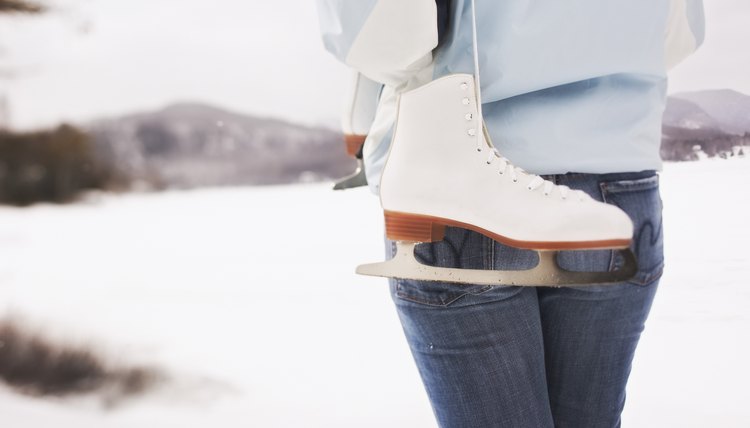How to Remove Rust From an Ice Skate Blade

Rusted ice skate blades prevent you from enjoying your time on the ice and may even make it impossible to skate. Poor maintenance and skate storage causes moisture to corrode the metal coating and even the base metal underneath skates. Left untreated, rust continues to damage the blades, forcing you to invest in a new pair. Fortunately, most minor rusting can be removed using elbow grease and a professional skate sharpener.
Examine the blades. If the only rust is along the U-shaped groove at the base of the blade, take the skates to your local skate shop for sharpening. Sharpening machines remove this type of rust with ease, while other methods may damage your blades. If you see rust anywhere else along the edges of the blades, skip this step.
Place the skate on its side along a tabletop. The edge of the blade should sit flat against the table. Run a low-grit sanding block along the side of the blade very gently to remove rust. Repeat this process on both sides of each blade.
Wipe the blades clean with a soft rag or towel so you can check your progress.
Apply a rust remover to a piece of fine steel wool. Scrub the blades with the steel wool very gently to remove rust without damaging or scratching the blades.
Wet your rag or towel, and use it to clean the blades. If you see any remaining rust, repeat Steps 4 and 5 until the rust is gone.
Remove tough rust or large amounts of corrosion at your local pro shop. If you cannot remove the rust yourself or the skates seem to be rusted all the way through, a sharpening pro can cross-grind the skates. Cross-grinding should be a last-resort, as it removes a large portion of the blade, which shortens its expected lifespan. In all but the most severe cases, cross-grinding gives your blades a fresh start, as it removes rust, burrs and other signs of damage.
Tips
Prevent rust by drying your blades thoroughly after each use with a soft rag or towel. Use cloth blade covers to keep the blades from rusting during storage.
Warnings
Never store ice skates with hard plastic covers over the blades. These guards are designed for walking around the rink, not storage, and will lead to rust if left on wet blades.
References
Writer Bio
Emily Beach works in the commercial construction industry in Maryland. She received her LEED accreditation from the U.S. Green Building Council in 2008 and is in the process of working towards an Architectural Hardware Consultant certification from the Door and Hardware Institute. She received a bachelor's degree in economics and management from Goucher College in Towson, Maryland.
